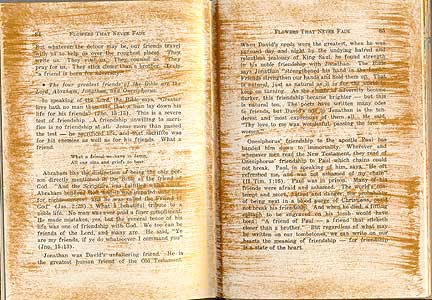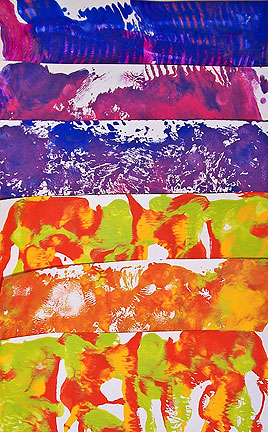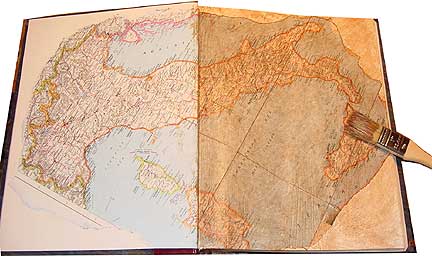All paints are a combination of two things: pigment, which gives the paint its color, and binder, which holds the pigment to the surface, and gives the paint its consistency and working properties. Have you ever opened a really old bottle of paint, and squirted out just clear goop instead of color? That’s the binder part of the paint that’s separated from the pigment. This annoying phenomenon is why I store my paint bottles upside down, and give them a good shake before I open them—I never can seem to use up paints before they start to separate.
So, we have pigment and binder. The difference in different grades of paints is the ratio of pigment to binder. Binder is generally much less expensive than pigment, so a paint with more binder and less pigment in the mix will be less expensive to manufacture than one with lots of pigment, and less binder. This ratio is called pigment load. Student grade paints, which are often the lowest grade, have a low pigment load, which makes them less expensive. The very best grades of paint have a high pigment load. This pretty much applies to every paint on the planet—watercolors, acrylics, oils, house paint, whatever. The big difference between cheap and expensive is almost always about the pigment load.
Now, how can you exploit this newfound knowledge?
Have you ever played with glazes? These are simply pigments with glaze medium mixed into them—and they’re often ridiculously expensive. I have very few real glazes in my paint arsenal. I simply buy cheap acrylic paints, which already have more binder and less pigment in them, and a bottle of clear glaze. I rarely need the glaze. A light, thin coat of cheap paints will often work the same way.
Now, if you want to completely cover something with opaque color, you’ll want to haul out a slightly more expensive paint, or you’ll spend your day painting multiple coats of cheap stuff to get good coverage. Alternately, you want to apply a sturdy base coat. Many people will base a light colored piece white with either white acrylic or gesso before applying color.
Yes, I’ll name names:
Really low pigment loads, AKA cheap paints: Plaid Apple Barrel Acrylics, DecoArt Americana Acrylics, Anita’s All Purpose Acrylics
Slightly better pigment loads: Plaid FolkArt Acrylics, Delta Ceramcoat
Even better pigment loads: Golden Fluid Acrylics
In my current acrylic collection, I have a whole bunch of cheap paints, because I do a lot of sheer color work. I have a few of the slightly better paints in colors I know I’ll use as opaque—mostly earth tones, plus my favorite yellow-gold. I have really good bottles of black and white, because there’s just no getting by with cheap stuff when you want a really dense black, or a really bright white.
There you have it—a really simplistic description of paint differences. There are other factors involved in paint quality, including the quality of the pigments and binders used, but I’m not much of a chemist, so I’m not going to attempt to discuss them.



